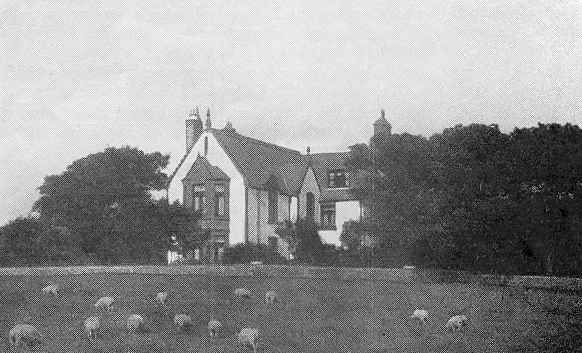1830 - 1930

The Manse
| N E W S F E E D S >>> |
WICK PARISH CHURCH
1830 - 1930

The Manse
|
In the Sermon on the Mount, Christ compared the man who built his house on the rock with him who built his house on sand. In 1822, when digging the foundation of the western gable of the church, the builder came upon running sand, and it was said that the excavations had to be made to the depth of thirty feet in order to reach a solid foundation. This considerable retarded the erection of the church, and it was not till 1830 that the present structure was completed. The church was built during the ministry of the Rev Robert Phin, whose son, the Rev Kenneth MacLeay Phin, D.D. minister of Galashiels was for many years one of the outstanding figures in the Church of Scotland. Mr Phin was succeeded in 1840 by the Rev Charles Thomson. Three years later came the disruption, which brought him "out" and the greater part of his congregation with him, and he and they constituted minister and congregation of the Free Church of Scotland. The Rev. William Lillie then became Parish Minister. Afterwards he received the D.D.degree of Aberdeen University. He laboured faithfully for thirty-one years, and built up the congregation anew. Dr. Lillie's son, the Rev. David Lille, B.D., IS MINISTER OF Watten North parish Church, and his grandson. Professor Lillie, serves the Church in Foreign Mission fileds. Mr Thomson and Dr. Lillie sleep side by side in the old Kirkyard. The Rev Alexander Clark succeeded Dr Lillie. During Mr Clark's ministry gas lighting was introduced into the church, and an excellent pipe organ installed. Alterations were made on the seating accommodation of the church for the greater comfort of worshippers. During Mr Clark's ministry the present church at Thrumster was built. The following Petition signed by 253 persons in that area was submitted to the minister:- THRUMSTER, February 6, 1899 To the Rev, Alexander Clark, Minister of Wick, Sir, - We, the undersigned residents of Thrumster and neighbourhood, being far from any church, desire to have a place of worship where we and our families may be able to attend Divine Service on Sabbath days. Seeing that you have now an assistant minister in this parish, we earnestly hope that you will consider favourably the wants of this district. If you can see your way to build a small chapel for our use we shall do all in our power to aid in its erection and maintenance. Mr Clark was succeeded by Rev John M. Dickie, B.D. with the hearty co-operation of the congregation, a splendid suite of Church Halls, including a church officer's house, was built in close proximity to the church. A manse was also erected for the missionary at Thrumster, the cost of which was met by Wick congregation. The Rev. G.S. Peebles, B.D., succeeded Mr Dickie, and during his ministry the present handsome oak communion Table and Chair were gifted by the Misses Henderson of Rosebank. The central aisle was also opened out - an improvement which has been much appreciated. The history of the church during the ministry of the Rev John MacDougall, B.D. (inducted 1981) showed further advancement along the paths of progress and structural improvement. The church was re-decorated and a choir vestry and a new minister's vestry were constructed. A Screen of fine tracery and carving was installed, which adds considerably to the beauty of the church.
The organ was overhauled at considerable expense, and two additional Memorial Communion Chairs were gifted by the late Miss Henderson. The two handsome Brass Flower Vases which adorn the Communion Table were presented to the church by the widow of Mr John Shepherd in memory of her husband, who was an elder of the church. During the Great War our congregation responded nobly to the call for service and sacrifice, and the two handsome Brass Panels in the vestibule of the church form a memorial to the sixty-four men of the congregation who laid down their lives - "Their name liveth for evermore." The church was also improved externally during Mr MacDougall's ministry. The largest gable wall was re-lathed and plastered, and the steeple and outside walls were pointed. And so, in a few paragraphs we have bridged a century! In 1839 the church was illuminated by the most modern method of lighting at that time - the four four-cornered "goose-neb" lamp. And now in 1930, in fulfilment of the curious paradox by which history repeats itself we are again having the church illuminated by the most modern form of lighting - electricity. It is also a great improvement to have our organ driven by electric power. During the last hundred years our fine old church has stood four corner square to the sunshine, rain and storm. It has been a place apart - a well by the way. There are many who week by week have found within its walls great peace, great strength, and great encouragement for the journey of life. With a prayer of thankfulness for past mercies, we look forward to the future with high hopes, and rejoice as a congregation in having our spiritual centre in the grand old church. "We love the place, O God, |